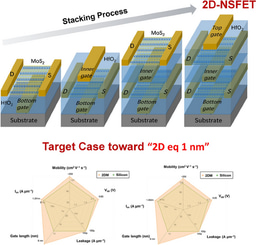Permuting species reveals their hidden rankings
Published in Ecology & Evolution, Physics, and Economics

What do honeybees and the Chinese economy have in common? At first sight, not much. Yet complexity science has revealed surprising analogies between ecological and economic ecosystems. An important commonality is the presence of mutualistic interactions – omnipresent in both ecological and economic contexts – where the involved interaction partners benefit from their interaction [1]. This is the case for interactions between honeybees and the plants they pollinate as well as for China’s products exported to other countries. Carrying on the analogy, in such mutualistic networks, both the honeybees and China are generalists – they have many links. Honeybees visit and deliver pollen to flowers of diverse species; China exports many diverse products.
On the surface, generalist species with more links are more important than specialists with only few interaction partners. Think about the worst case scenario: if a generalist species goes extinct, then many other species are also endangered [1]. If all of a sudden, China stopped exporting products, many national economies would be negatively affected. At the same time, even a species with only few partners might be important to the robustness of the ecosystem, if its presence is vital to the survival of its interaction partners. Therefore, it is not trivial to determine the rankings, i.e., the relative importance, of species by simply counting their interaction partners.
In a recent paper [2], together with our co-authors, we introduced a new theoretical model to calculate these ranks analytically. The model we proposed is motivated by a well-known property of both ecological and economic mutualistic networks: Nestedness [3]. In simple words, nestedness means that while generalists interact with both generalists and specialists, specialists only interact with generalists. This is the case, for example, in world trade, where China exports many products and the products exported by less competitive countries tend to be also exported by China (but not vice versa). Our model assumes that the importance status of a species is not given by its number of interaction partners, but it is a rank variable to be determined self-consistently.
An implication of nestedness is that interactions between low-rank, i.e. specialist, species are unlikely. This translates mathematically into an energy function introduced in Ref. [2], where the energy of a link between two low-rank species is high, and the energy of the whole system is determined by the sum of the energies of individual links. The total energy is, therefore, determined by the ranks. But how to determine these ranks?
We interpreted the ranking of the species as a permutation of the rows and columns of the adjacency matrix of the interaction network – a binary matrix where 1s and 0s signal the presence or absence, respectively, of an interaction. Different permutations lead to different energy values. The paper’s core idea is that each of these permutations can be interpreted as a particular configuration of an interacting system. Therefore, the question of finding the optimal ranking translates into the question of finding the configuration of the interacting system that minimizes the system’s total energy. This is the type of problem where statistical mechanics has a particularly strong track record, by means of which we were able to find the analytic solution of the problem.
The practical value of the method lies in how well it performs compared to state-of-the-art ranking methods from ecology and economic complexity fields. We found lower energies compared to genetic algorithms routinely used in ecology [4] and the fitness-complexity algorithm – a network-based heuristics introduced in economic complexity [5] that features among the World Bank’s competitiveness indicators [6].
Yet many important questions remain open. First, the paper assumes pairwise interactions, yet many interactions involve several actors. For example, countries do not just export products – they export products to other countries. The network location of the importing country might contain additional important information on the ranks of the products and the exporting countries. In the conclusions of our work [2], we suggest a simple way to generalize the new algorithm to such many-body interactions, which may reveal to us some surprises about the vulnerability of ecological species and competitiveness of economic actors.
Second, the model calculates the ranks from a given, fixed interaction network structure. But many exciting questions are dynamic in nature: What do the observed hierarchies and global structures reveal about the processes that led to the formation of a given network? Through which processes can an actor improve its ranking, and what does it imply for the actor’s and system’s prosperity? Addressing these questions is inherently challenging as it involves the analysis of time-dependent processes and factoring out confounding effects. Yet the payoff is potentially high, as understanding the underlying processes could hold implications for policies as diverse as economic development and ecosystem preservation.
References
[1] Bascompte, J., & Jordano, P. (2013). Mutualistic networks. Princeton University Press.
[2] Mariani, M. S., Mazzilli, D., Patelli, A., Sels, D., & Morone, F. (2024). Ranking species in complex ecosystems through nestedness maximization. Communications Physics, 7(1), 102.
[3] Mariani, M. S., Ren, Z. M., Bascompte, J., & Tessone, C. J. (2019). Nestedness in complex networks: observation, emergence, and implications. Physics Reports, 813, 1-90.
[4] Rodríguez Gironés, M. A., & Santamaría, L. (2006). A new algorithm to calculate the nestedness temperature of presence–absence matrices. Journal of Biogeography, 33(5), 924-935.
[5] Tacchella, A., Mazzilli, D., & Pietronero, L. (2018). A dynamical systems approach to gross domestic product forecasting. Nature Physics, 14(8), 861-865.
[6] World Bank Data Catalog: https://datacatalog.worldbank.org/dataset/economic-fitness
Follow the Topic
-
Communications Physics

An open access journal from Nature Portfolio publishing high-quality research, reviews and commentary in all areas of the physical sciences.
Related Collections
With Collections, you can get published faster and increase your visibility.
Higher-order interaction networks 2024
Publishing Model: Open Access
Deadline: Feb 28, 2026
Physics-Informed Machine Learning
Publishing Model: Hybrid
Deadline: May 31, 2026




Please sign in or register for FREE
If you are a registered user on Research Communities by Springer Nature, please sign in